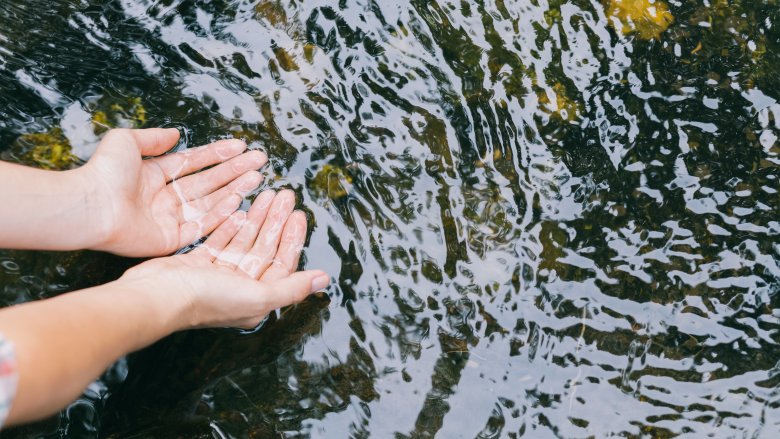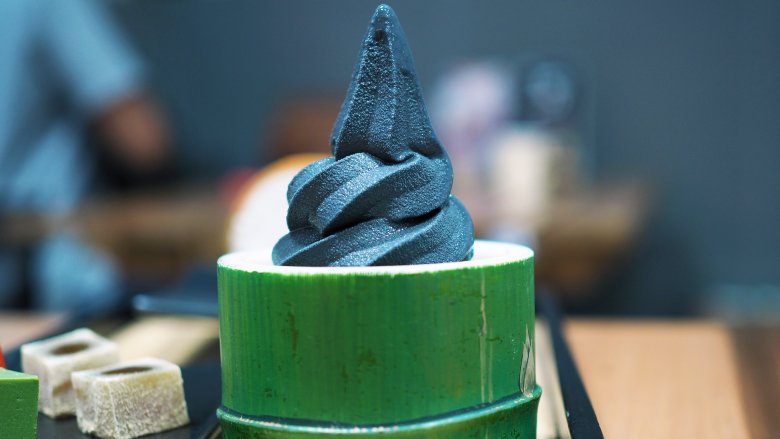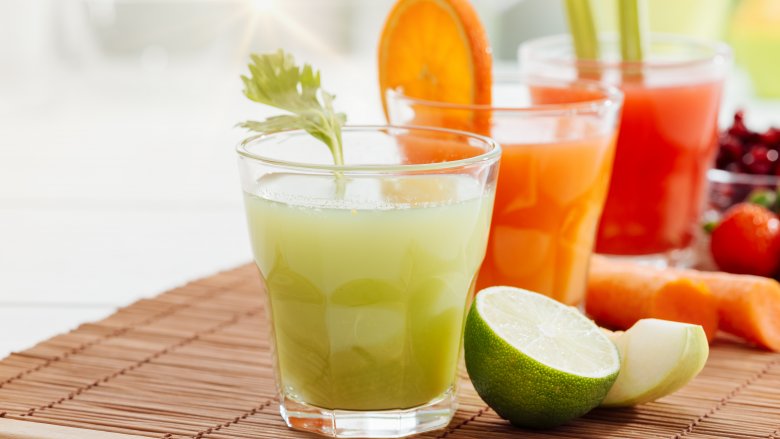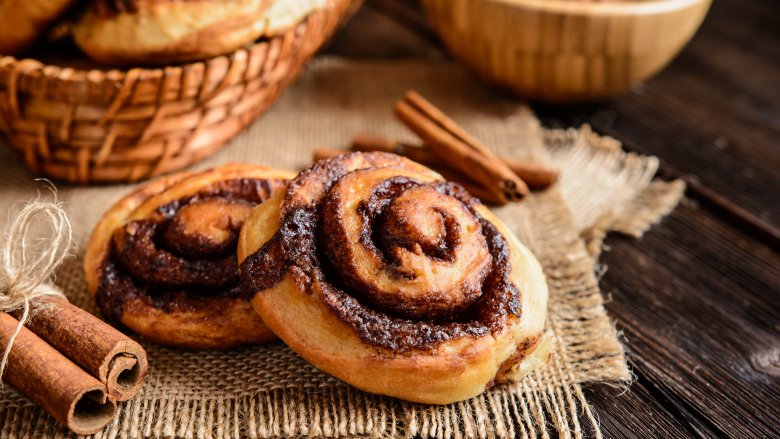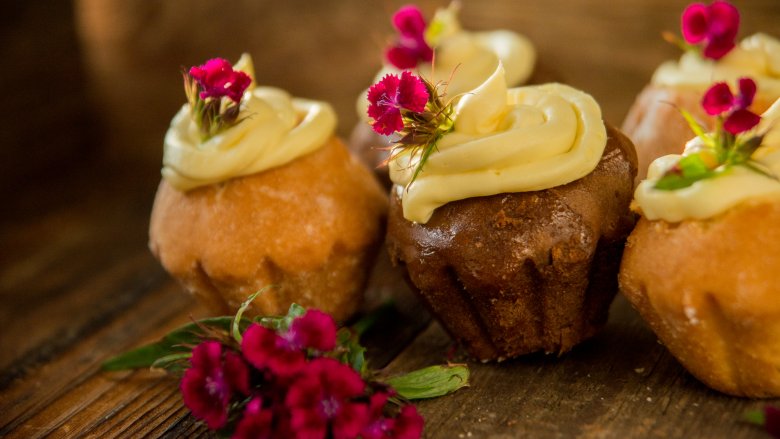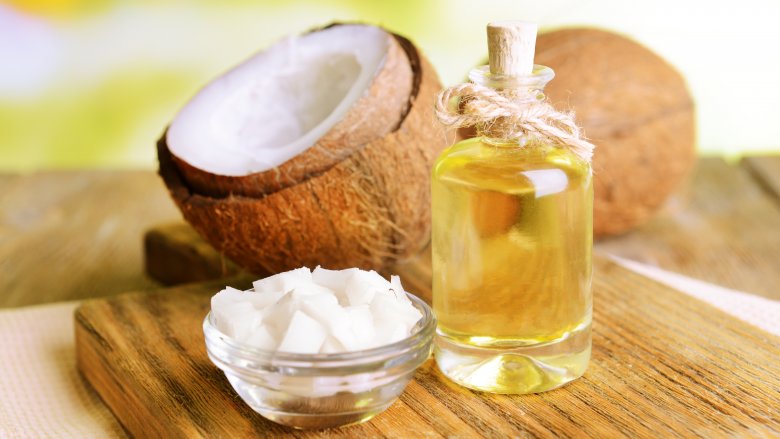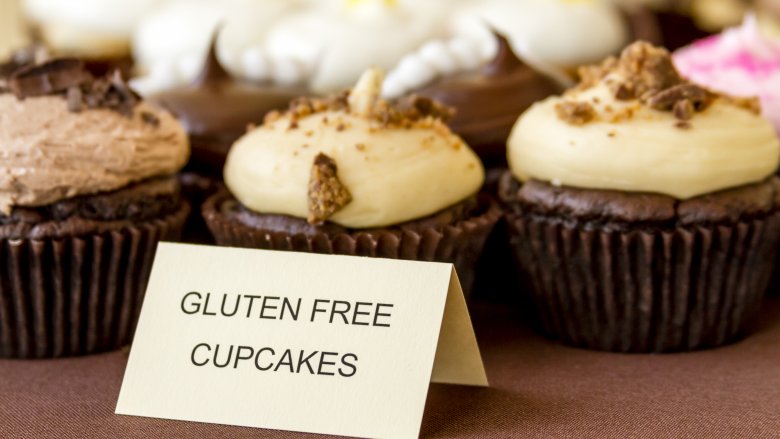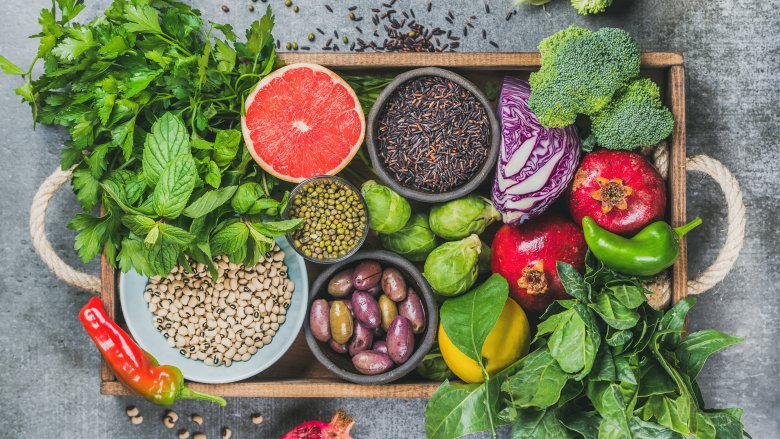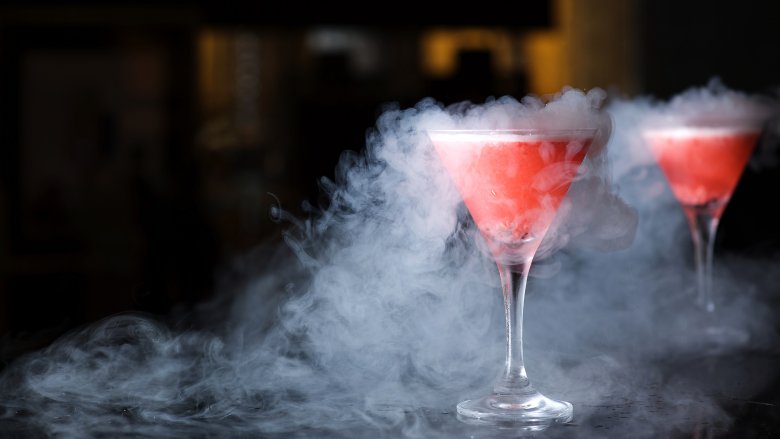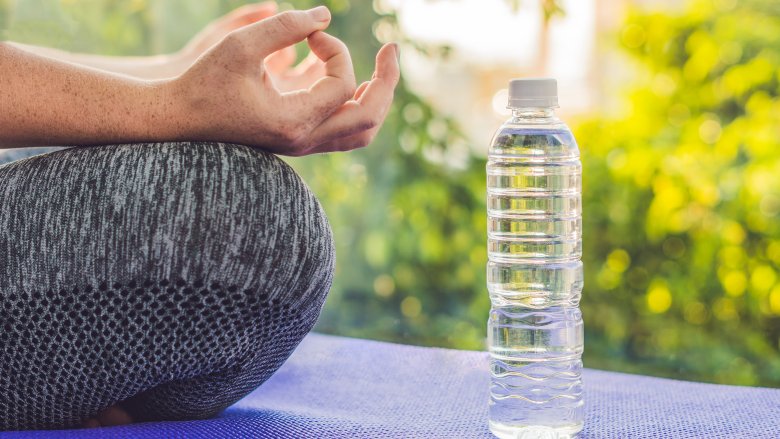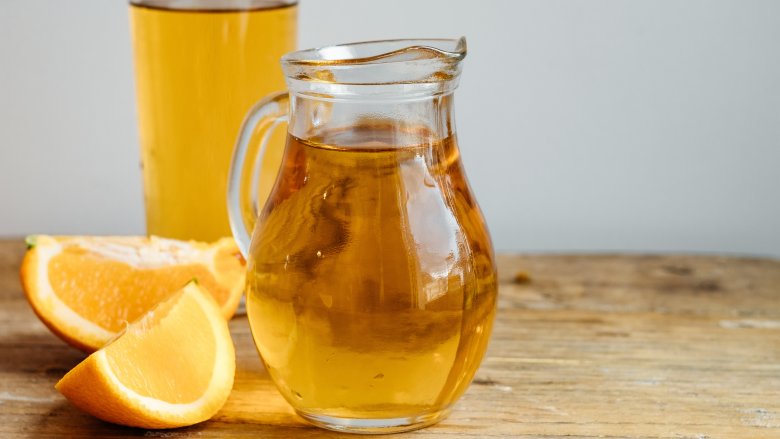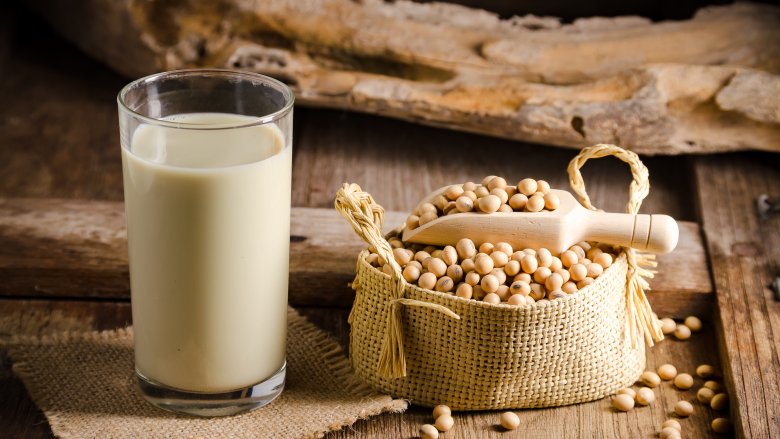Food Trends That Are Actually Dangerous
We live in an era of social media, and it's no secret that food trends are huge. Some rise and fall in a relatively short time, others we remember for their utter weirdness, and we're always trying to guess what's going to pop up on Instagram next so we can have the ingredients ready and waiting in the kitchen. Some trends are because they're pretty, some are supposed to healthy, and some are just inexplicable. But some food trends, as cool as they may seem, are actually dangerous. Just because something is all over Instagram, Pinterest, or Facebook, that doesn't mean it's good for you — so let's take a look at some of the most dangerous food trends you've probably seen show up in your social media feeds without even knowing it. Stay far away from these food trends — no matter how cool they may look (or who's doing it).
Raw water
If you're of a certain age, you remember playing The Oregon Trail in school. Remember when your little family of travelers would randomly get sick from scary-sounding things like dysentery, then die a few turns later? People really did get sick and die on the trail, suffering from horrible illnesses and deadly diarrhea. They got it from drinking the water — the same thing is now a "natural food" trend called "raw water."
NBC News reported raw water (and let's be clear, it's just dirty, unfiltered, untreated water contaminated with all sorts of things) started trending at the same time around 800 million people are being forced to drink that same stuff, and dying from it. That's no exaggeration, as the World Health Organization estimates "raw water" causes about 502,000 deaths a year.
Just let that sink in for a minute. Half a million people are killed every year by being forced to drink the stuff that's flying off the shelves of trendy, First World shops, bought by people who have access to water filtered in a process that's been called one of the greatest achievements in public health. Ever. That's insane!
Activated charcoal
Activated charcoal is used to turn foods a cool, goth-black, but it's also been touted for some health benefits. The Huffington Post Australia talked to nutritionist Pip Reed, who explained the claims charcoal could detox the body. It's true that charcoal is great at capturing and removing things like heavy metals and other chemicals — that's why it's used to filter water and remove those same impurities that are going to make you sick when you chug a bottle of raw water. (Ironic, no?)
But there's a catch. Nutritionist Fiona Tuck clarified, saying that not only do our bodies detox themselves, but activated charcoal is only going to absorb what's in your digestive system. That includes vitamins, nutrients, and prescription medications. According to gastroenterologist Patricia Raymond, MD (via Women's Health), it will also to lessen the effectiveness of those medications, and yes, that includes birth control. It's also been linked to causing all kinds of gastrointestinal distress, and if you happen to breathe it in, it's entirely possible it's going to damage your lungs. Now you know. Are those awesome Insta shots really worth it?
Juice cleanses
At a glance, juice cleanses seem like they're a good idea. They're not, and US News Health even goes as far as calling them "Health Hocus Pocus".
That's because of what happens to your body when you start feeding it only juices. According to physician Caroline Cederquist, a big part of the problem happens when you're not only forcing your body to function on a calorie count way below what you actually need, but you're also not eating the protein you should be. Without a daily dose of protein, your body starts trying to find it elsewhere. It does that by destroying muscle tissue, which means the weight you're losing is the weight you actually want to keep.
Since you're not eating right, you're going into what The Ohio State University dietitian Lauren Blake calls "starvation mode." Your metabolism slows, and that ultimately makes it harder to burn the fat you're trying to lose. You're just sabotaging yourself.
Adding cinnamon to everything
Love cinnamon? If you do, you're not alone. CNN says it's not just delicious when you add it to your latte, you could be getting some medical benefits, too. It's been a part of Ayurvedic medicine for centuries, it's mentioned in the Bible, and it might help manage your cholesterol and fight diabetes. For this reason, people are adding it by the spoonful to their coffees, on their toast, and in their soups.
But, there's a catch. There are a few different types of cinnamon, and the cheap stuff we get at the store might not have all the health benefits the more expensive varieties do. That more affordable stuff is called Cassia cinnamon, and it's a favorite seasoning in Europe. Unfortunately, EU research found that high doses of cinnamon (and a compound called coumarin) could cause liver damage, and it was of such concern they started regulating how much cinnamon can be used on a single treat.
How much is too much? Less than you think, says NPR. The EU suggests no more than a teaspoon a day for the average adult, but there's good news. Not everyone seems susceptible to this liver damage, and if it's caught, it's reversible. Or, you could just limit your cinnamon roll intake.
Edible flowers
There's no denying that desserts decorated with edible flowers are very pretty. But botanist James Wong noticed something else about a lot of these desserts, and that's the frightening fact that not only are a lot of these flowers not edible, they're downright dangerous.
He wrote a piece for The Guardian warning would-be social media superstars about the danger in some of the flowers they were using for the finishing touches on their foods. When he did a quick search for edible flowers, he found cakes using narcissi, which are pretty but cause sores, swelling, and rashes. He found a smoothie decorated with a catharanthus (a toxic flower containing chemicals used in chemotherapy), pudding with lantana flowers (which can cause liver failure), and rhododendrons (which are terribly toxic). Wong regularly tweets about some of the dangers he sees cropping up in social media feeds, and stresses that while there are plenty of pretty flowers that are perfectly edible, you should know the difference before popping a few on top of a cupcake.
Switching everything to coconut oil
There are a ton of cooking oil options, and it can get a little overwhelming. Vegetable, olive, and sunflower oil aside, it's coconut oil that's lauded as a healthy new superfood. You might want to rethink switching everything over to coconut oil, though, and here's why.
In 2017, the American Heart Association (via USA Today) released their official stance on coconut oil: it's worse than butter, beef fat, and pork lard... by a lot. Let's take that last one. Pork lard contains about 39 percent saturated fat, and that's a lot. By comparison, coconut oil contains about 82 percent saturated fat, and that's insane! That's the stuff you want to avoid, as it's been linked to things like high cholesterol and heart disease. Fats are complicated, and while we won't get into all that, we will get into what British Dietetic Association spokesperson Priya Tew (via The Guardian) says about how bad coconut oil is. A responsible diet means no more than 20g of saturated fat a day, and that entire amount is filled by two tablespoons of coconut oil. That's definitely no miracle health food.
Going gluten-free
Celiac disease is a very real medical condition that seriously restricts the diet and eating habits of a portion of the population. But somehow, that's turned into gluten being blamed for everything from feeling sluggish to causing autism, and that's made the move to going gluten-free incredibly trendy. But Harvard Health says if you're going gluten-free without being diagnosed as having a medical reason to do so, you're setting yourself up for some serious deficiencies.
Cutting out gluten means you're also cutting out fiber, and a ton of vitamins and nutrients. A B9 deficiency is particularly dangerous for women who are pregnant or trying to get pregnant, as B9 helps prevent birth defects.
Columbia University Medical Centre's Benjamin Lebwohl (via Science Alert) goes a step further, saying his studies suggest a low-gluten diet could be linked to an increased risk of heart disease. Another study linked gluten-free diets to an increased risk of developing diabetes, because the fiber found in grains is known to protect against type 2 diabetes.
Clean eating
If "clean eating" was a poster child, she'd be the poster child for perfect health. She doesn't eat processed foods and she's healthier and happier for it — that's the schtick, anyway. Experts say clean eating is something very different in reality, and in 2016, The Guardian talked to nutritionist Rhiannon Lambert about what clean eating does. While it starts off innocently, it can spiral out of control into an obsession so prevalent it has a name: orthorexia nervosa. Then? Lambert says it can turn into a full-blown eating disorder.
We knew about it then, and it's not going away. In 2017, Dr. Max Pemberton wrote an open letter (via The Independent) warning people of the dangers of clean eating. Restricting diet so much had left many of his patients suffering from things like reproductive troubles, osteoporosis, and even depressed circulatory systems that made them vulnerable to heart attacks. He talked about mental health issues stemming from clean eating, from depression to eating disorders. Even early proponents of the movement have made it a point to distance themselves from it, and Pemberton says we need to listen to medical professionals, not bloggers and celebrities.
Liquid nitrogen
Using liquid nitrogen — particularly in desserts and cocktails — isn't a new thing, and that makes it easy to forget it can still be dangerous.
In 2017, the Pensacola Interstate Fair was serving up a liquid nitrogen-treated dessert called Dragon's Breath. According to Today Food, it burned at least one girl when she touched it, sending her to the ER for some emergency surgery that might have saved her thumb. That's not even the worst injury caused by the stuff — it was way back in 2012 The Telegraph reported on the tragedy that befell 18-year-old Gaby Scanlon. She drank a cocktail made with liquid nitrogen (that investigation found had been correctly prepared), and suffered a reaction that led to the removal of her stomach.
Scanlon had simply been out celebrating her birthday when the incident occured, and that's a pretty terrifying thing. She was stabilized not long after, but Peter Barham, a professor at the University of Bristol's School of Physics, took the opportunity to remind everyone that liquid nitrogen is around -320 degrees Fahrenheit, and it can do some serious damage.
Drinking too much water
You know those people, the ones with their fancy water bottles who keep a close eye on their water intake. Water is necessary, but too much is ultimately just as dangerous as not getting enough.
Harvard Health says (via CBS News) you want to think about drinking around 30 to 50 ounces a day (and that's four to six standard glasses), although you could need more if you build up a heavy sweat while exercising or working outside. According to Dr. Sharmeela Saha from the University Hospitals Case Medical Center, you shouldn't forget about foods like watermelon, fruits, and many vegetables, either. Their high water content means they count, too. That's important, because what you shouldn't do is over-hydrate.
Drinking too much water can overwhelm your kidneys, and when that happens, water gets pushed into your body's cells. That leads to swelling and sometimes even death. It's called exercise-associated hyponatremia, because it usually happens when athletes overcompensate and drink too much. Early warning signs include dizziness, nausea, and puffiness or weight gain while you're exercising, and the next step is delirium, headaches, confusion, and even seizures and coma. A good guideline (via Medical Daily) is to be less focused on amounts, and drink when you're thirsty.
Home-brewed kombucha
Kombucha has been regaled as a cure-all for conditions and ailments ranging from high blood pressure and arthritis to cancer, but according to the National Capital Poison Center, your homemade kombucha might come with a serious risk.
Because of the process used to make home-brew kombucha, there's a chance the brew will turn toxic. Since it's highly acidic, it can eat away at whatever container it's being fermented in and become contaminated. The poison center says there have been reports of lead poisoning and hepatitis stemming from home brews, and people have developed conditions like inflamed heart muscles, cardiac arrest, and severe muscle weakness. It's been linked to at least one death, and they also add there's not much in the way of substantiated health claims that confirm this is the health tonic it's touted as, anyway. Is it worth the risk?
Non-dairy milks
Almond milk, soy milk, coconut milk... there are all kinds of non-dairy milks showing up in your grocery store, and there's no denying that some of them are pretty tasty. But there are some consequences to replacing your non-dairy milk with one of these versions, and it's not what you expect.
According to a study done by the University of Surrey (via The Independent), dairy-free milks are missing an important nutrient: iodine. Non-dairy milks have less than 2 percent the iodine content of cow milk, and since dairy products are a major dietary source of it, making the switch to a non-dairy milk is dangerous. Iodine deficiencies can lead to thyroid problems, and in pregnant women, it's been linked to low IQ-scores in their children.
CNN says there are other dangers, too, especially in kids. A study done at St. Michael's Hospital in Toronto found that 3-year-olds who drank only non-dairy milks were an average about half an inch shorter than their dairy milk-drinking peers. It's too early to tell if there are issues that will continue into adulthood, but it is cause for concern.
